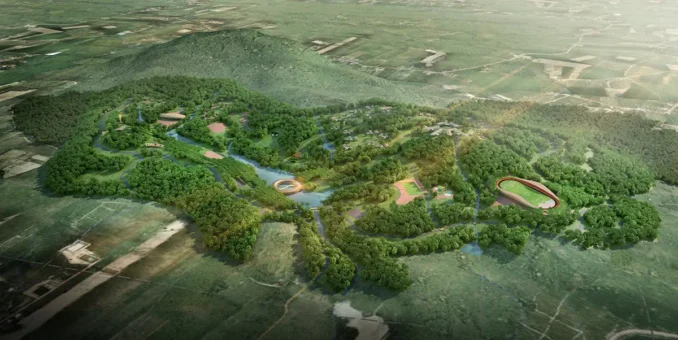
The Chawae Educational Innovation Center is located in Ban Khai district in Rayong province of Thailand. The site lies in the center between several other research and development facilities also conducted under the Eastern Economic Corridor (EEC). Due to the progressive development of the EEC in Rayong, their goal is to create a 21st century learning environment that adapts with the changes of future technologies and supports the Eastern Economic Corridor (EEC)’s aim for Rayong to be the leading city in technological and economic development with the public consciousness to preserve natural resources and create sustainable development for humanity as a whole. The Chawae Educational Innovation Center hence creates a curriculum that covers all skills.
The curriculum of the learning center is based from Rayong Macro learning infrastructure and focuses on these 3 main aspects:
- Learning center and boarding school that excels in music and sports as the basis of education for youth to learn skills needed and occupational opportunities for the future
- Scout camp to teach the youth about morals, being one with nature and discipline through hands on experiences and carrying the tradition of Thai scout camps that build children into determined people with responsibility towards self, society and the environment. The activities are also based from the king’s sufficiency economy teachings
- An innovative research and education facility, fully equipped to aid the research and development of technology, creativity and innovation. Solving problems for the future of Rayong and raising awareness about the environment.
Originally being used as a rubber plantation mixed with watershed forests, the site consists of high topographic slope variations. To preserve the existing topography’s identity, the designs are implemented in between the steep hills, on the low flat lands near existing forests and water bodies. The facilities are divided into 3 main areas, the boarding school for music, sports and the arts, and the scout camp grounds for all ages, and the all-rounded learning and research facilities and stadiums.

The 3 main divided areas are for various scales of activities from small local activities to district scale up to regional scales such as cultural or music festivals, or world class sports competitions. This allows the project to benefit Rayong with its creative economy, whilst adding value to their existing rubber tree agriculture business.
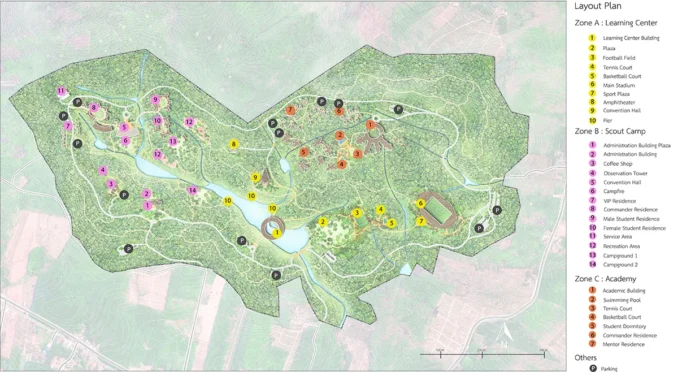
The boarding school buildings have their learning spaces and boarding houses surrounded by the rubber tree forests, with learning and show spaces implemented within nature. The structures all have elevated basements to allow the continuity of green spaces.
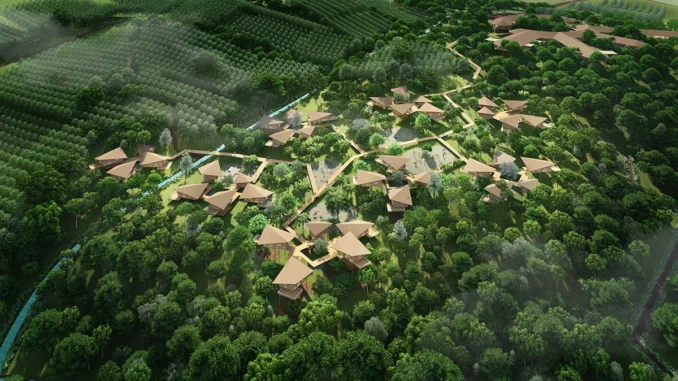
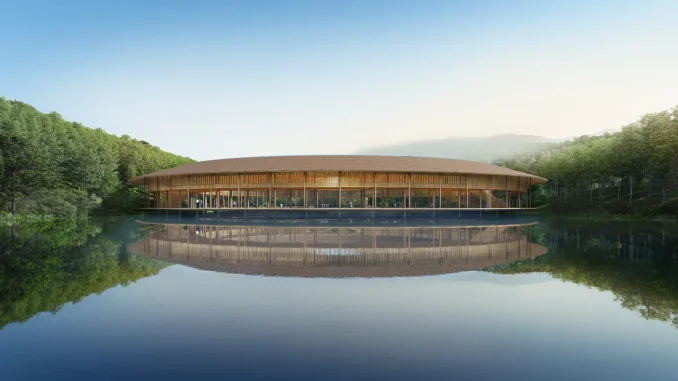
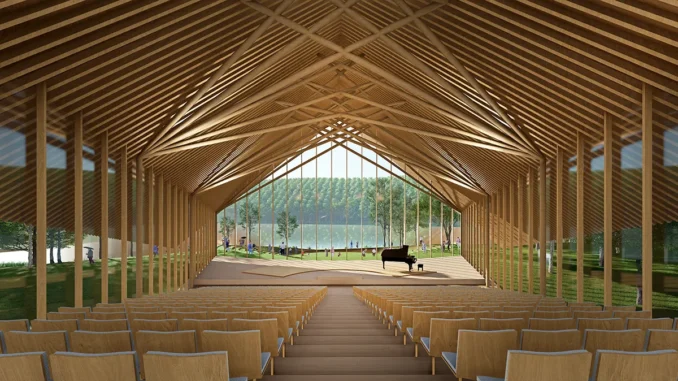
The scout camp is designed to have both outdoors and semi outdoor spaces. Children and adults need to use their creativity, team bonding and individual survival skills to surpass each base, whilst some bases are more educational such as learning about astronomy, sustainable farming and outdoor cooking. Some bases are designed for flexible activities depending on the lesson or generation of users.
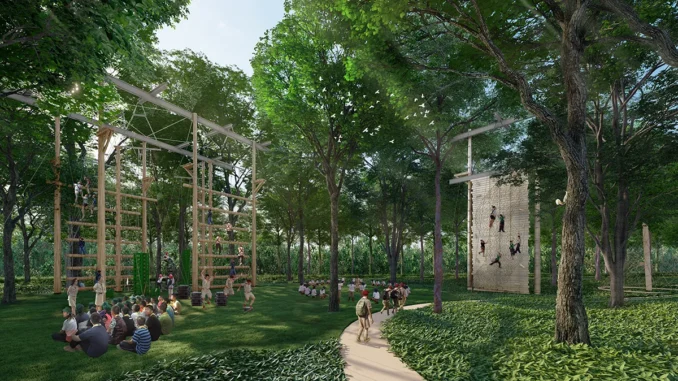
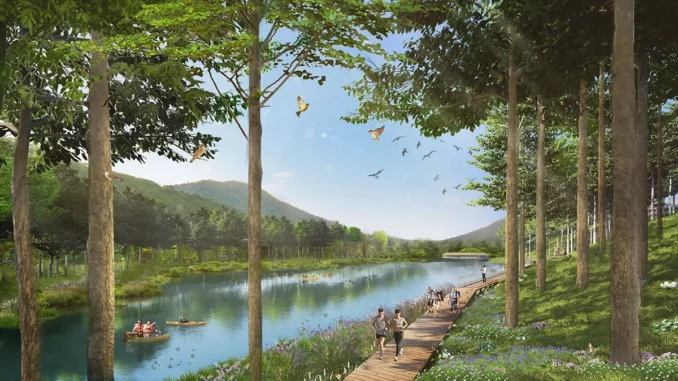

The research facilities and stadiums have unique designs to stand out whilst their view is open to still feel connected to the forest around. The communal activity lawn, the auditorium amphitheater and the forest amphitheater is the space for recreation, events, and learning about nature and encourage the exchange of information and social bonding.
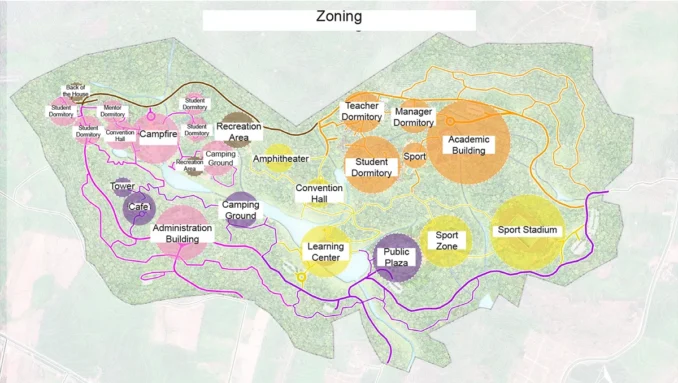
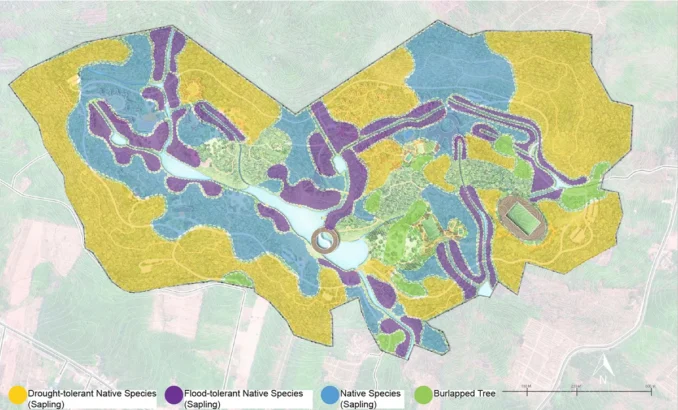
Sustainable water management is achieved by the merging of existing water channels along the lower terrains, they collect and store rain water run-offs from steep hills and small waterways around the site into the 2 main ponds. Vetiver plants are grown to slow down the water flow, improve soil moisture and water absorption. At lower levels, weirs are constructed to store water from rainy seasons to use in the drought or for daily usage such as watering plants. Ponds are scattered around the site to help increase the soil moisture for plant growth and creates a cooling waterside atmosphere. Each building and activity area learns about the sufficient water management and water can be reused through the wastewater treatment process.
The Forest school encourages the relationships between humans and nature, as well as human to human.

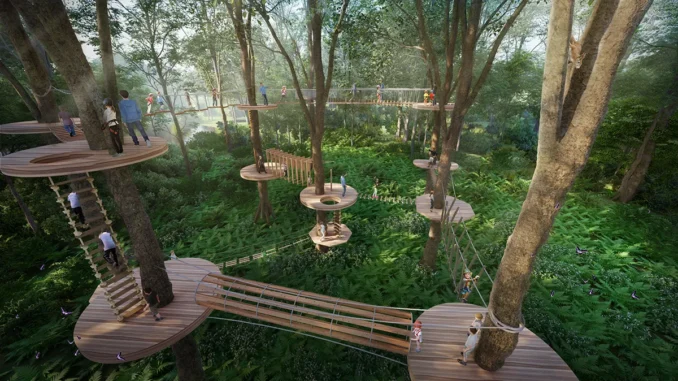
Roads for cars are integrated into the site with pockets for parking in the forest, the bike lane surrounds the facilities and steeper terrains are made into extreme sport trails such as for mountain biking. The walking routes follow along various forest types from deciduous forests to watershed ecologies and allows for nature learning trails that teaches children to be responsive with their environment. Learning facilities and scout camp creates awareness for the conservation and restoration of our natural environment and sufficient living. Not only is the scout camp for children but also family camping and corporate outings. It promotes life-long learning, accessible for all ages to exchange knowledge and bonding group activities in this outdoor classroom.
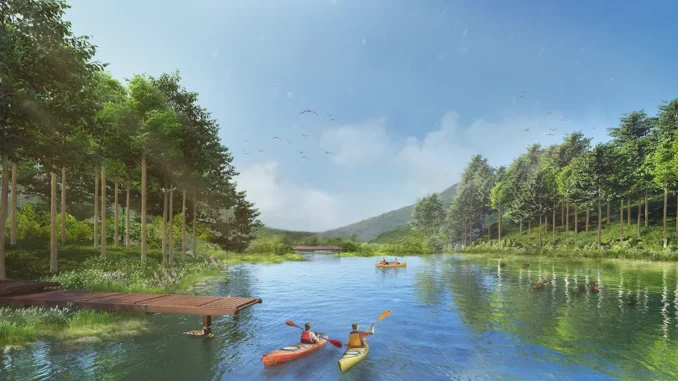
Monodominance forests negatively affect the soil quality in the long run. To succeed ecological diversity, variety of plant species is introduced for restoration. The rubber plantation grid system allows for systematic forest restoration, by growing native plant saplings in-between to gradually achieve biodiversity. Saplings of pioneer trees are grown first to stabilize the soil, then deciduous trees and watershed trees are planted in their areas accordingly. These plants will give canopy cover which enables understory plants to establish. The weirs built with local construction methods and natural materials help contain the soil moisture, easing growth of other species with minimal human impact. Existing rubber plants can still provide business to the economy in the early stages of the project, and will gradually be taken out and replaced with a fully diverse ecology. The restored biodiversity of the forest will benefit the community as source of produce and life-long learning about our native ecology.
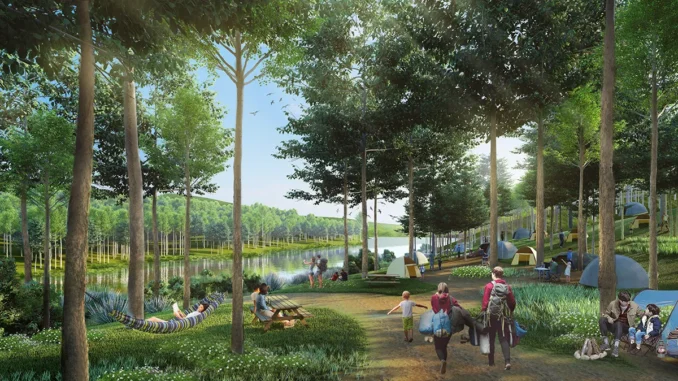
Chawae Educational Innovation Center
Location: Ban Khai district, Rayong province, Thailand
Designer Credit: Arsomsilp Community and Environmental Architect
Client: Provincial Administrative Organisation of Rayong Province
Architect : Arsomsilp Community and Environmental Architect
